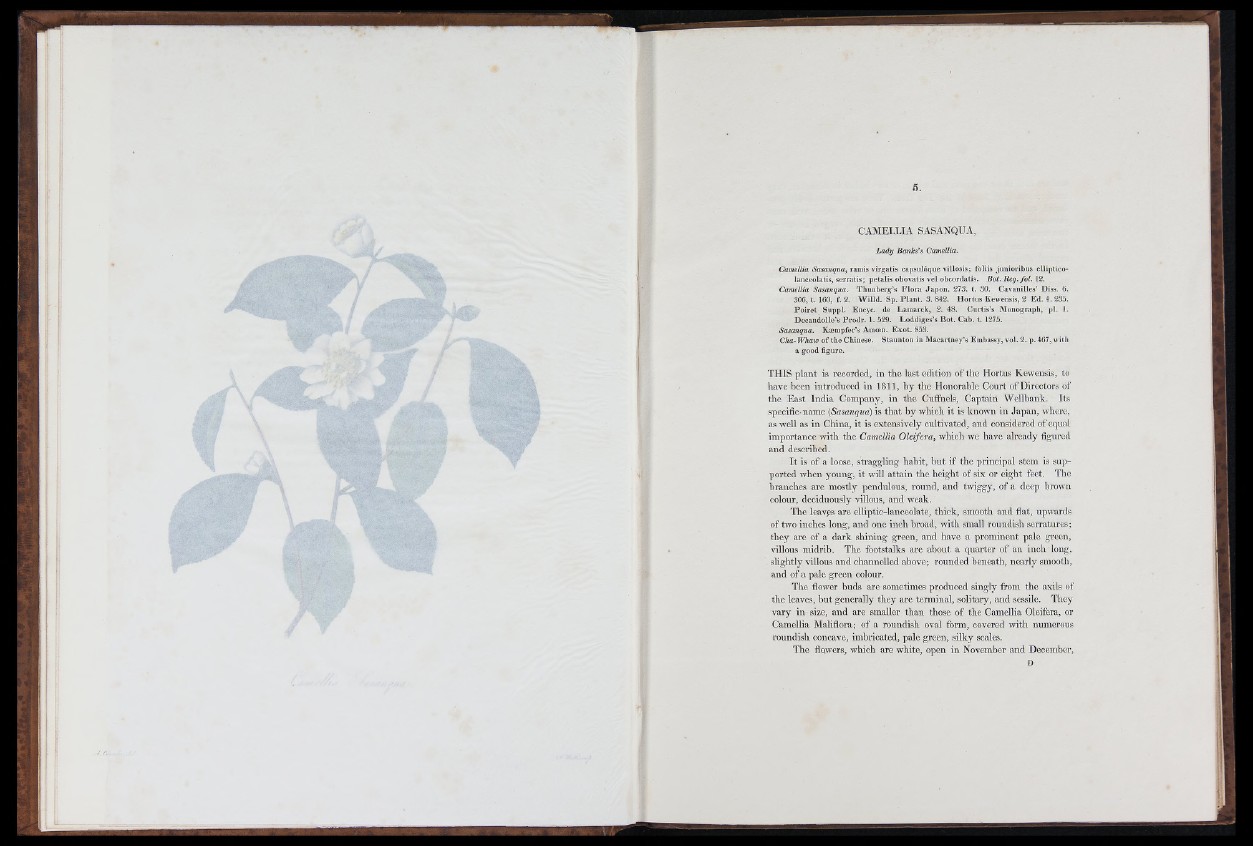
CAMELLIA SASANQUA,
L a d y B a n k s ’s Camellia.
Camellia Sa sa n q u a , vamis v irg a tis c ap su laq u e v illo s is ; foliis ju n io r ib u s e llip tic o -
la n c e o la tis , s e r r a tis ; p e ta lis o b o v a tis v e l o b c o rd a tis . B o t. R e g .fo l. 12.
Camellia Sasa n q u a . T h u n b e rg ’s F lo r a J a p o n . 273. t . SO. C a v a n ille s ’ Diss. 6.
306, t . 160, f. 2. W i l ld . S p . P l a n t . 3. 842. H o r tu s Kewensis, 2 E d . 4. 235.
P o i r e t S u p p l. E n cy c . de L am a r c k , 2. 48. C u r tis ’s M o n o g ra p h , p i. 1.
D e c a n d o lle ’s P r o d r . 1. 529. L o d d ig e s ’s B o t. C ab . t . 1275.
Sasa n q u a . Keempfer’s Amcen. E x o t . 853.
C h a -W h aw o f th e C h in e se . S ta u n to n in M a c a rtn e y ’s Em ba ssy, v o l. 2. p . 467, w itli
a g o o d figure .
THIS plant is recorded, in th e last edition of the Hortus Kewensis, to
have been introduced in 1811, by the Honorable Court of Directors of
the Ea st In d ia Company, in th e CufFnels, Captain Wellbank. Its
specific- name {Sasanqua) is th a t b y which it is known in Japan, where,
as well as in China, it is extensively cultivated, and considered of equal
importance with the Camellia Oleifera, which we have already figured
and described.
I t is o f a loose, straggling habit, b u t if the principal stem is supported
when young, it will atta in the height of six or eight feet. The
branches are mostly pendulous, round, and twiggy, of a deep brown
colour, deciduously villous, and weak.
The leaves are elliptic-lanceolate, thick, smooth and flat, upwards
of two inches long, and one inch broad, with small roundish serratures;
they are of a dark shining green, and have a prominent pale green,
villous midrib. The footstalks are about a quarter of an inch long,
slightly villous and channelled above; rounded beneath, nearly smooth,
and of a pale green colour.
The flower buds are sometimes produced singly from th e axils of
the leaves, b u t generally they are terminal, solitary, and sessile. They
vary in size, and are smaller th an those o f the Camellia Oleifera, or
Camellia Maliflora; of a roundish oval form, covered with numerous
roundish concave, imbricated, pale green, silky scales.
The flqwers, which are white, open in November and December,
D